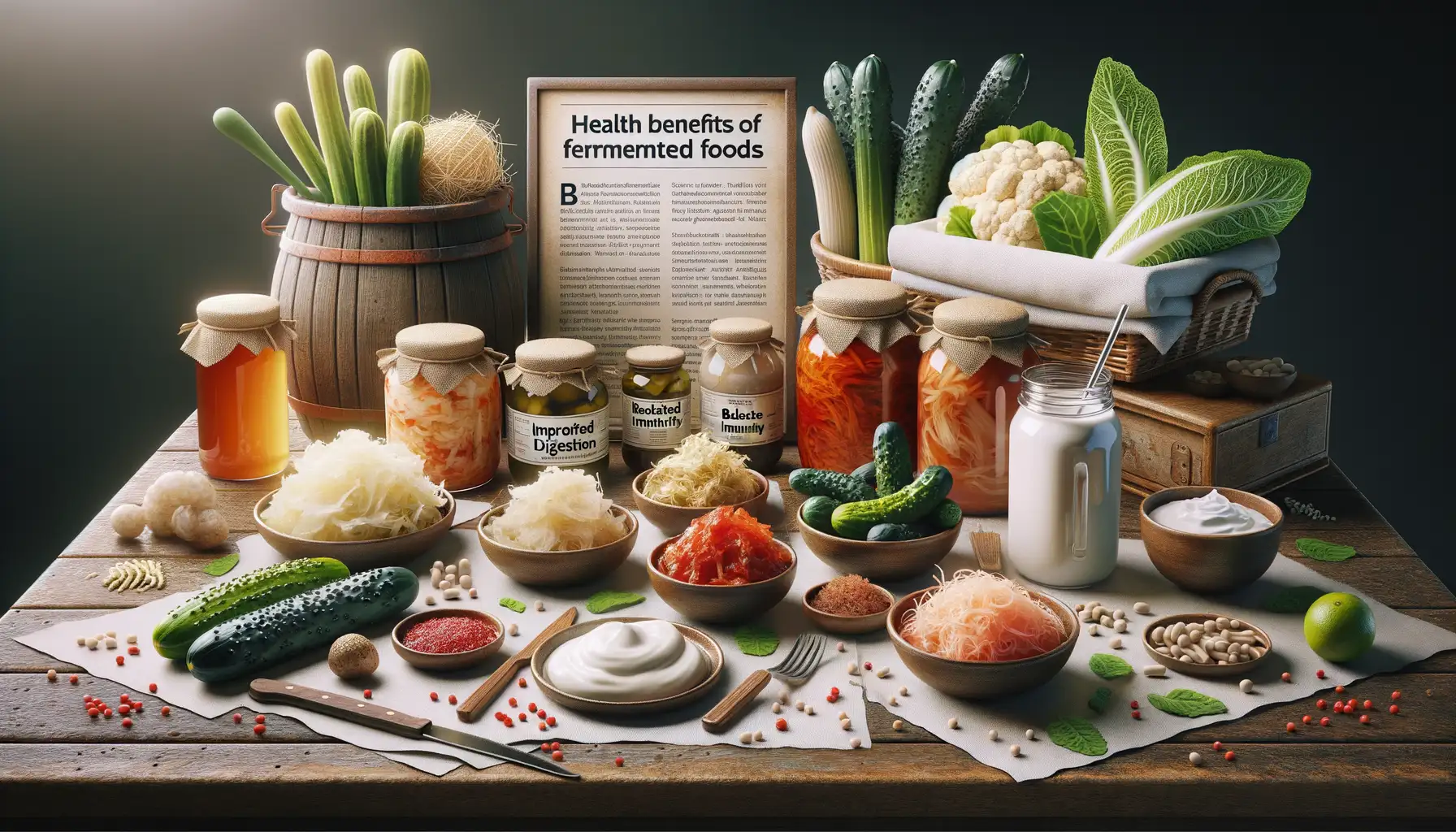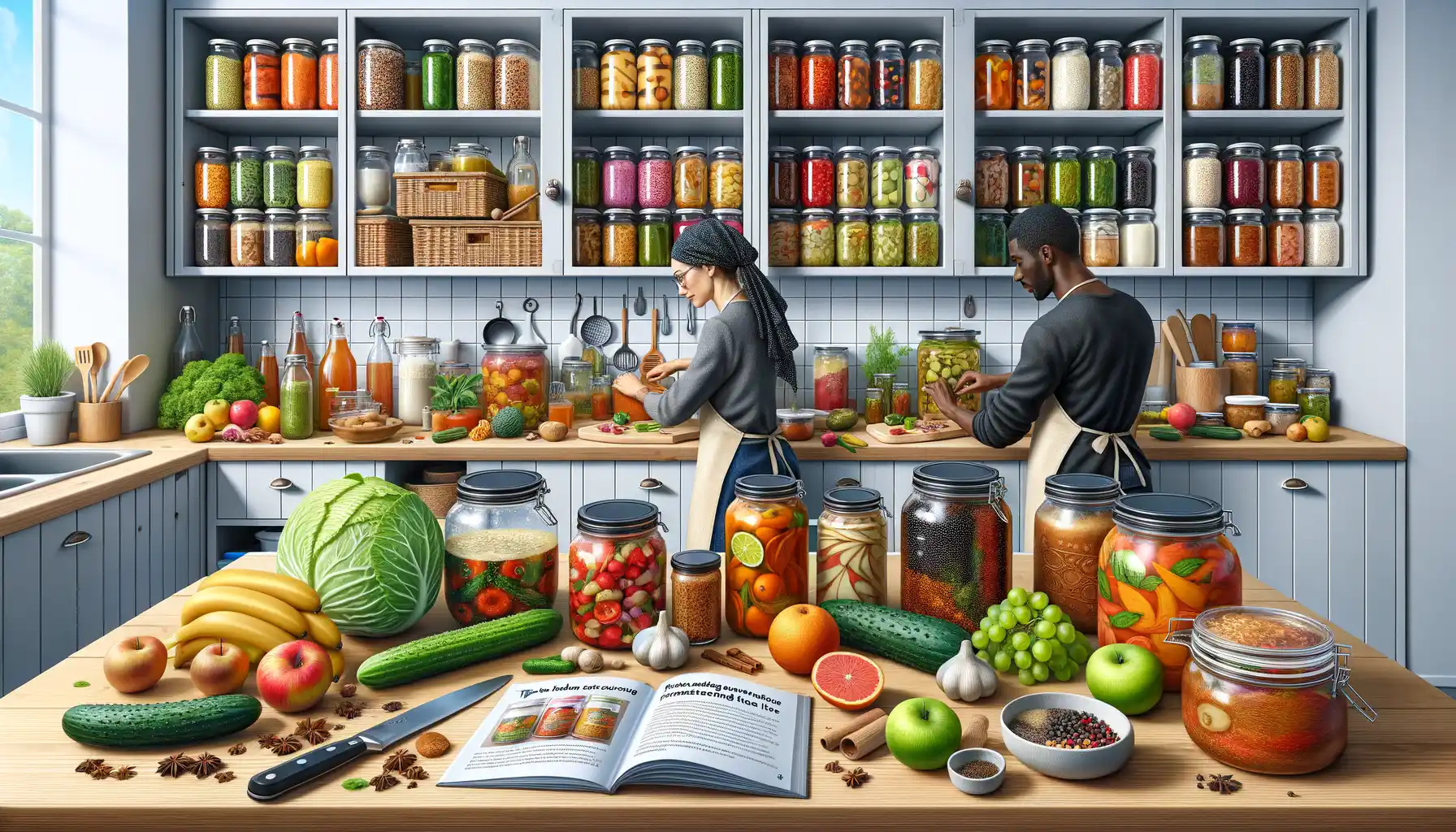Exploring the Origins of Kimchi and Sauerkraut
A Journey Through Culture and Flavor
What do a spicy, ruby-red Korean staple and a gently tangy European classic have in common? More than you might think. Kimchi and sauerkraut are more than just fermented dishes; they’re edible time capsules, telling stories of survival, tradition, and culinary brilliance. Imagine centuries ago, before refrigeration, when the challenge wasn’t meal delivery apps but preserving fresh produce through harsh winters. Fermentation wasn’t a choice—it was a lifeline.
In Korea, families would gather during kimjang season, preparing vast quantities of kimchi to last the cold months. This wasn’t just food prep; it was an emotional bond-building ritual. Red chili flakes, garlic, and fish sauce blended with napa cabbage and radishes became a fiery signature of resilience.
Meanwhile, over in Europe, sauerkraut emerged as a humble yet ingenious solution. Cabbage, salt, and patience transformed into magic inside wooden barrels. The result? A probiotic-rich dish that not only preserved vegetables but also fueled sailors on long voyages, preventing scurvy along the way. Talk about a transformative crunch!
- Kimchi: Dynamic, spicy, an explosion of umami.
- Sauerkraut: Earthy, crisp, understated elegance.
These ancient traditions still breathe life into our plates today—each bite connecting us to generations past.
Health Benefits of Fermented Foods

Have you ever wondered how a humble jar of kimchi or sauerkraut could completely transform your well-being? These fermented gems aren’t just loaded with flavor; they’re like tiny, edible superheroes for your body. Let’s dive into why they deserve a front-row seat on your plate.
Why Your Gut Will Thank You
Your gut is like a bustling metropolis, home to trillions of bacteria that make up your microbiome. Fermented foods such as kimchi and sauerkraut act as the ultimate urban planners, boosting friendly bacteria and creating balance. This means better digestion, fewer tummy troubles, and even a stronger immune system.
- Probiotics galore: These live cultures improve nutrient absorption and help you feel less bloated.
- Rich in enzymes: They break down food like pros, giving your digestive system some much-needed R&R.
Beyond the Belly: Fermentation’s Hidden Perks
Fermented foods are like multi-tools for your health. Loaded with vitamins like K2 and antioxidants, they go beyond gut health. Think stronger bones, glowing skin, and reduced inflammation. Plus, some studies suggest they may even lift your mood. Who knew pickled cabbage could make such a difference?
In short, every crunchy bite of sauerkraut or fiery forkful of kimchi doesn’t just nourish your body—it makes it thrive. So, grab your fork and let fermentation do its magic!
Traditional vs. Modern Preparation Methods

The Art of Crafting Flavor: A Nod to the Past
Let’s rewind time for a moment. Can you picture a wooden table, an apron dusted with flour, and a family gathering around to chop cabbage by hand? This is how kimchi and sauerkraut once came to life—purely by touch, taste, and tradition. In contrast to modern shortcuts, traditional methods embodied patience: fermented in clay crocks buried beneath the ground or stored in cool cellars for months.
These methods relied on the natural rhythm of seasons: autumn harvest meant preparing enough to last the winter. No sterilized jars or precision thermometers—just intuition. The result? Richer layers of flavor that developed slowly, almost romantically, over time.
- Kimchi: Often fermented in traditional earthenware called “onggi,” which allowed perfect air circulation.
- Sauerkraut: Weighted down with stones in a barrel—a tactile tradition of care.
Modern Convenience vs. Ancestral Patience
Fast forward to today, and we find factory-made batches churned out in stainless steel tanks. Sure, it’s quicker, but does it carry the same soulful punch? Many brands use pasteurization to speed things up—a process that, while safe, kills off many beneficial probiotics. And forget about those layered flavors; the complexity often fades when mass production enters the scene.
Of course, there’s beauty in balance! Modern techniques give us consistency and ease—your favorite jar of store-bought kimchi or kraut is just a grocery aisle away. But if you’ve ever had the privilege of tasting a batch made the old way, you’ll know why aficionados claim, “You can taste the love.”
Creative Ways to Incorporate Kimchi and Sauerkraut in Meals

Transform Your Everyday Dishes
Let’s be honest: *kimchi* and *sauerkraut* are the flavor-packed superstars your meals didn’t know they were missing. These fermented wonders aren’t just side dishes—they’re secret weapons in the kitchen! Imagine this: a hearty grilled cheese sandwich oozing with melted cheddar, but suddenly it’s got a kick—it’s because you slipped in a layer of pungent, tangy kimchi. Game-changer, right?
Or take something as simple as a humble taco night. What if your taco filling got a zesty upgrade with a spoonful of smoky-spicy kimchi, adding that “wow” factor? Alternatively, swap out traditional coleslaw for a crunchy, probiotic-packed sauerkraut slaw—your BBQ ribs will never feel lonely again.
- Add a dollop of kimchi to your morning scrambled eggs or avocado toast for a fiery start to the day.
- Mix sauerkraut into your potato salad for a surprising zing at your next picnic.
- Blend either into hummus or guacamole for party dips that keep people guessing (and eating!).
An Adventure in Unexpected Pairings
Have you ever thrown sauerkraut into a stir-fry? Hear me out. That hit of tang cuts through the richness of the dish like a symphony of flavors harmonizing on your taste buds. Or consider tossing kimchi into a creamy mac and cheese—yes, it sounds wild, but trust me, the contrast is what culinary dreams are made of.
For desserts—because why not push boundaries—try a cheeky kimchi pancake drizzled with a touch of maple syrup, or fold sauerkraut into chocolate cake batter (German bakers have been doing it for years for ultra-moist cakes). It’s like discovering an entirely new universe of delicious chaos.
Tips for Making and Storing Fermented Foods at Home

Getting Hands-On: Fermenting Like a Pro
Picture this: jars bubbling away on your kitchen counter, the tangy aroma of fermentation filling the air. Sounds dreamy, right? The secret to perfect fermented foods is surprisingly simple—attention to detail, a pinch of patience, and a dose of love. Start by choosing fresh ingredients. For kimchi, crisp Napa cabbage and spicy Korean chili flakes are non-negotiable. For sauerkraut, go for firm, green cabbage with tightly packed leaves.
A golden rule? Salt is your best friend. It draws out moisture, creates an environment where good bacteria thrive, and keeps the bad guys at bay. Too little salt, and you risk mushy disasters; too much, and it could taste like a salt lick.
- Use just-cleaned glass jars—avoid plastic, as it can leach chemicals.
- Weigh your veggies down with a small plate or fermentation weight to keep everything submerged in brine.
- Let nature run its course: most ferments need about 3-7 days, depending on temperature and your taste preference.
Storing Your Flavor-Packed Creations
Now for the pièce de résistance—storage! Once your ferment hits that perfect tang, move it to the refrigerator. This slows fermentation, locking in flavor and crunch. I’ve found that sauerkraut thrives in wide-mouth mason jars, while my kimchi loves an airtight glass crock. A quick tip? Label everything! Trust me, six weeks later, you won’t remember which experiment was the turmeric kraut and which was your garlic-packed kimchi extravaganza.
Want it to last months? Keep temperature fluctuations to a minimum and avoid cross-contamination. Oh, and if a bit of white film (known as kahm yeast) appears, don’t panic—it’s harmless. Simply skim it off, and your ferment will soldier on beautifully.